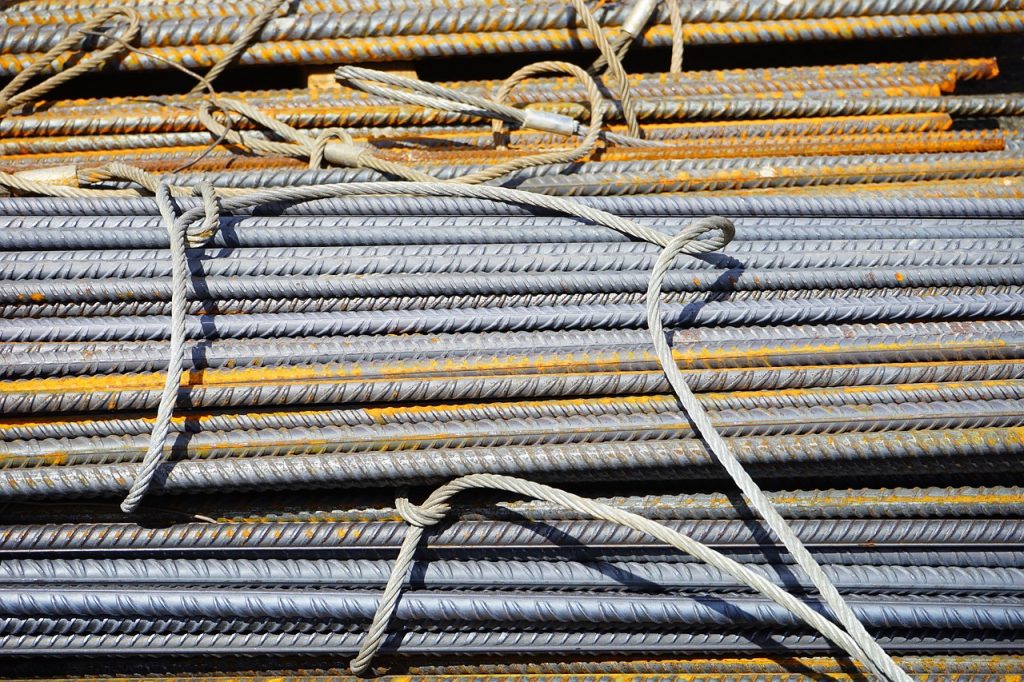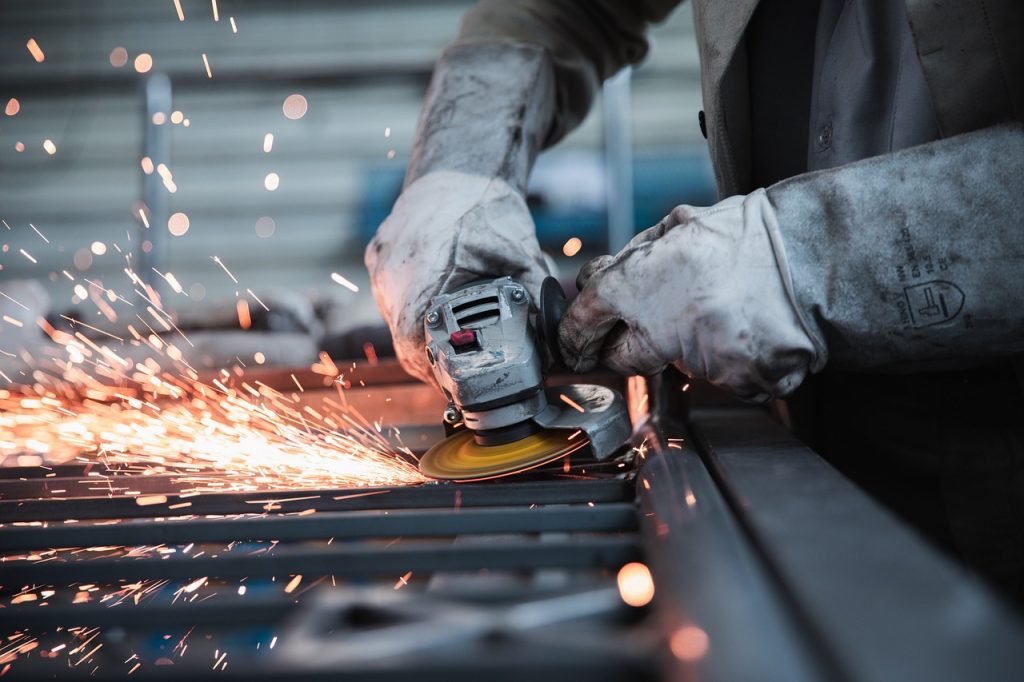Exploring the Basics of Steel Reinforcement
Steel reinforcement is a critical component in construction, providing strength and stability to various structures. Understanding the definition, importance, and historical evolution of steel reinforcement is essential for anyone involved in construction projects.
What is Steel Reinforcement?
Definition and Importance
Steel reinforcement refers to the process of adding steel bars, wires, or mesh to concrete to enhance its tensile strength. This practice significantly improves the structural integrity of concrete, making it suitable for a wide range of construction applications. The global steel rebar market size was valued at around $224.5 billion in 2022 and is projected to reach USD 317.4 billion by 2030, at a CAGR of 4.4%. Additionally, 500 million tons of rebar are used every year in reinforced concrete, showcasing its crucial role in construction.
How Steel Reinforcement Works with Concrete
The interaction between steel reinforcement and concrete is based on their complementary properties. While concrete excels in compression strength, it lacks adequate tensile strength. By incorporating steel reinforcement within the concrete matrix, the resulting composite material effectively addresses this limitation. This combination ensures that the structure can withstand both compressive and tensile forces, making it ideal for various architectural and engineering designs.
The History of Steel Reinforcement
Early Uses and Evolution
The use of steel reinforcing to strengthen concrete dates back to the late 19th century when it was primarily employed in heavy construction such as roadways, bridges, and buildings. For instance, reinforced concrete quickly became the method of choice for European buildings before spreading to America. In addition, rebar emerged as a way to strengthen structures in France around the 1800s.
Modern Advances in Reinforcement Techniques
Over time, modern advances have revolutionized steel reinforcement techniques. Galvanized steel reinforcement was first utilized on marine piers in 1953 for increased protection in harsh environments. Furthermore, specialized types such as epoxy-coated rebars and stainless steel rebars have been developed to address specific construction requirements.
By delving into these foundational aspects of steel reinforcement, one can gain a comprehensive understanding of its significance in modern construction practices.
Diving Into the Types of Steel Reinforcement
Steel reinforcement comes in various types, each serving specific purposes in construction projects. Understanding these types is crucial for ensuring the structural integrity and longevity of buildings and infrastructure.
Primary Types of Steel Reinforcement
Reinforcing Bars (Rebars)
Reinforcing bars, commonly known as rebars, are one of the most widely used types of steel reinforcement in construction. They are hot-rolled deformed steel bars that provide exceptional strength in both tension and compression. Rebars are characterized by their rugged surface texture, which enhances their bond with concrete. This type of steel reinforcement is essential for carrying tensile loads and compensating for the imbalance in concrete’s behavior, ensuring the durability and stability of structures.
Welded Wire Fabric
Welded wire fabric consists of a series of parallel longitudinal wires welded to cross wires at regular intervals. This type of steel reinforcement offers versatility and ease of installation, making it suitable for various concrete applications. It provides localized resistance for durability and aesthetic reasons, contributing to the overall robustness and longevity of concrete structures.
Specialized Types of Steel Reinforcement
Epoxy-Coated Rebars
Epoxy-coated rebars are designed to enhance corrosion resistance in aggressive environments such as marine or industrial settings. These rebars are coated with an epoxy layer, providing a protective barrier against moisture, chemicals, and other corrosive elements. The epoxy coating significantly prolongs the service life of reinforced concrete structures, making them ideal for long-term durability in challenging conditions.
Stainless Steel Rebars
Stainless steel rebars offer superior corrosion resistance compared to traditional carbon steel rebars. Their unique composition makes them highly resistant to rust and deterioration, even in harsh environments exposed to high levels of moisture or chemical exposure. As a result, stainless steel rebars are often used in specialized construction projects where long-term durability is paramount.
By understanding these primary and specialized types of steel reinforcement, construction professionals can make informed decisions regarding material selection based on specific project requirements.
Qingdao Sunrise New Materials Co., Ltd. (referred to as “Sunrise New Materials”) is an international and professional supplier of steel and non-ferrous metal raw materials. The company is committed to providing more reliable and satisfactory customized supply solutions for steel and metal products to global users.
Based in Qingdao, China, Sunrise New Materials has invested and built production lines for products such as galvanized color coating, seamless steel pipes, cold-rolled plates, fiberglass, and stainless steel within China.
Understanding the Properties of Steel Reinforcement
Steel reinforcement possesses key properties that are essential for its effective use in construction projects. These properties, including tensile strength and ductility, play a crucial role in ensuring the durability and longevity of reinforced concrete structures.
Key Properties of Steel Reinforcement
Tensile Strength
Tensile strength is a fundamental property of steel reinforcement, representing its ability to resist tension or stretching forces without breaking. This property is particularly significant in construction applications where materials must withstand various loads and forces. Studies have shown that investigating mechanical properties of deformed reinforcement steel bars has become an area of interest by many scholars, highlighting the importance of understanding the tensile strength factor in steel reinforcement.
Ductility
In addition to tensile strength, ductility is another critical property exhibited by steel reinforcement. Ductility refers to the material’s capacity to deform plastically under stress before fracturing. This characteristic allows steel rebars to undergo significant elongation or bending without losing their structural integrity, making them highly suitable for withstanding dynamic and seismic loads. The International Journal of Steel Structures (2019)emphasizes the necessity of understanding the properties of reinforcing steel bars before their application in construction projects.
How These Properties Influence Construction
Durability and Longevity
The inherent tensile strength and ductility of steel reinforcement significantly contribute to the durability and longevity of reinforced concrete structures. By providing robust resistance against tension forces, steel rebars prevent and minimize concrete cracks under tension loads, as highlighted in a study published in The Constructor (2021). This ensures that structures maintain their structural integrity over extended periods, reducing maintenance requirements and enhancing overall longevity.
Resistance to Environmental Factors
Steel reinforcement’s ability to withstand environmental factors such as moisture, chemicals, and corrosion is vital for ensuring the long-term performance of reinforced concrete structures. New trends in concrete reinforcing steel emphasize the importance of using materials that offer superior resistance to environmental degradation while maintaining cost-effectiveness (Terracon, 2021). Understanding these properties enables construction professionals to make informed decisions regarding material selection based on specific project requirements.
By comprehensively understanding the key properties of steel reinforcement and how they influence construction practices, individuals involved in construction projects can ensure the optimal performance and longevity of reinforced concrete structures.
The Critical Role of Steel Rebars in Construction
Steel rebars play a pivotal role in the construction industry, offering essential support and reinforcement to various structures. Understanding why steel rebars are indispensable, as well as the best practices for their installation and maintenance, is crucial for ensuring the structural integrity and longevity of construction projects.
Why Steel Rebars are Essential
Enhancing Concrete’s Tensile Strength
Steel rebars are instrumental in enhancing the tensile strength of concrete structures. By incorporating steel rebars within concrete, the composite material becomes capable of withstanding tension forces, thereby preventing cracks and ensuring structural stability. This critical function significantly contributes to the overall durability and performance of reinforced concrete structures across diverse applications.
Applications in Various Structures
The versatility of steel rebars allows them to be utilized in a wide range of structures, including residential buildings, commercial complexes, bridges, dams, and highways. Their ability to reinforce concrete enables these structures to withstand dynamic loads, environmental stresses, and seismic forces. As a result, steel rebars are integral components that ensure the safety and resilience of various construction projects worldwide.
Installation and Maintenance of Steel Rebars
Best Practices for Installation
Proper installation techniques are paramount for maximizing the effectiveness of steel rebars. It involves meticulous placement within concrete forms at specified intervals and depths to ensure uniform distribution throughout the structure. Additionally, adherence to industry standards regarding bar spacing, lap lengths, and anchorage details is essential for achieving optimal reinforcement performance.
Furthermore, it is imperative to employ skilled labor equipped with knowledge about handling and securing steel rebars effectively. This ensures that the installation process aligns with engineering specifications while maintaining high-quality construction standards.
Maintenance and Long-Term Care
Regular inspection and maintenance procedures are vital for preserving the integrity of steel rebars within reinforced concrete structures. Periodic assessments enable early detection of potential corrosion or damage due to environmental factors or aging. Implementing protective measures such as coatings or cathodic protection systems can mitigate corrosion risks and extend the service life of steel rebars.
Moreover, long-term care involves proactive measures such as monitoring structural performance over time through non-destructive testing methods like ultrasonic pulse velocity testing or ground-penetrating radar surveys. These strategies aid in identifying any deterioration or deficiencies in reinforcement systems early on, allowing for timely remediation efforts.
By understanding why steel rebars are indispensable in construction projects and implementing best practices for their installation and maintenance, stakeholders can ensure the reliability and longevity of reinforced concrete structures.
Wrapping Up: Steel Reinforcement in Modern Construction
The Future of Steel Reinforcement
Innovations and Technological Advances
The steel rebar market is experiencing significant growth, driven by the increasing demand for infrastructure development, urbanization, and construction activities globally. This surge in demand positions steel rebar as a key building material for modern construction projects. Moreover, the focus on sustainable and eco-friendly construction practices is propelling the adoption of high-strength, low carbon steel rebar. This innovative approach offers a more environmentally friendly alternative to traditional rebar products, aligning with the industry’s shift towards sustainability.
In addition to meeting current market needs, steel rebar producers are actively innovating their products to cater to the evolving demands of the construction sector. Fundamental design and material composition alternatives, along with research efforts into other types of well-performing reinforcing steel, are driving metallurgical innovations. These advancements are poised to change traditional construction specifications by providing better quality, more cost-effective, and longer-lasting products. As a result, new innovations in the industry are making this tried-and-true technique even better.
Sustainability and Environmental Considerations
The future of steel reinforcement also hinges on sustainability and environmental considerations. High-end usage and technological developments continue to drive innovation in the steel rebar sector. Recent grades such as Fe-500, Fe-550, and Fe-500D reflect the industry’s commitment to advancing its product offerings. Modern steel rebars are designed for corrosion-resistant, epoxy-coated, and earthquake-resistant applications—showcasing a proactive approach towards environmental sustainability.
Furthermore, increased public transit financing, rapid urbanization, and developing infrastructure are expected to further boost the industry’s progress. With newly industrialized nations forecasted to grab approximately sixty percent of all expected infrastructure investments globally, it is evident that these countries will continue to be vital markets for steel rebar.
Final Thoughts on Steel Reinforcement
The Importance of Choosing the Right Type
As modern construction practices evolve alongside technological advancements and sustainability initiatives, choosing the right type of steel reinforcement becomes increasingly crucial. The diverse range of available options—from traditional rebars to high-strength, low carbon alternatives—presents an opportunity for construction professionals to align their projects with sustainable practices while ensuring structural integrity.
In conclusion, understanding the historical significance of steel reinforcement along with its varied types and properties provides a comprehensive foundation for navigating modern construction challenges. By embracing innovation and prioritizing environmental considerations when selecting steel reinforcement materials, stakeholders can contribute to sustainable urban development while meeting the growing demands of global infrastructure projects.
This marks an exciting era for steel reinforcement in modern construction—a time defined by innovation-driven progress and a steadfast commitment to environmental responsibility.








